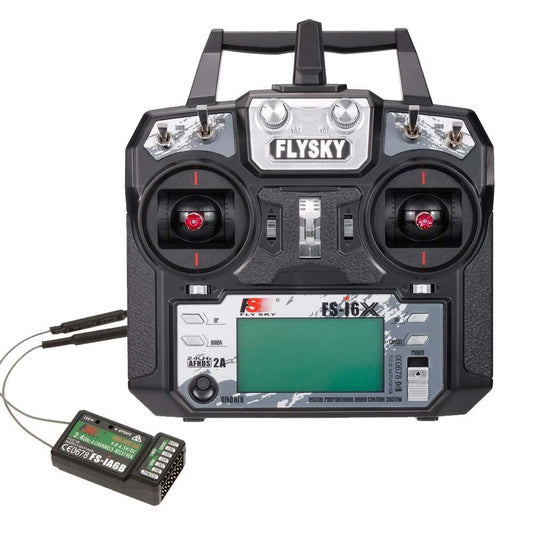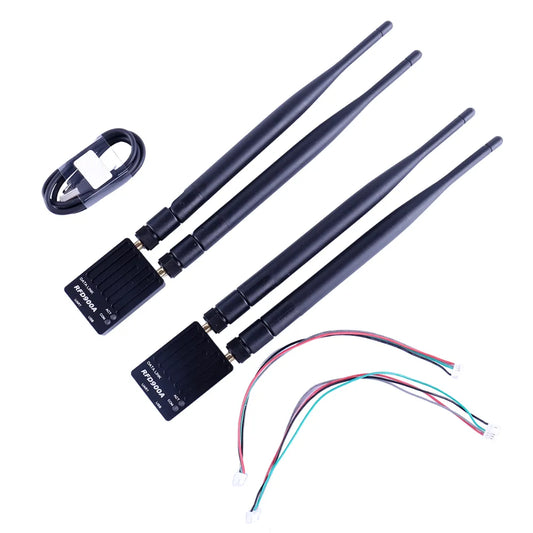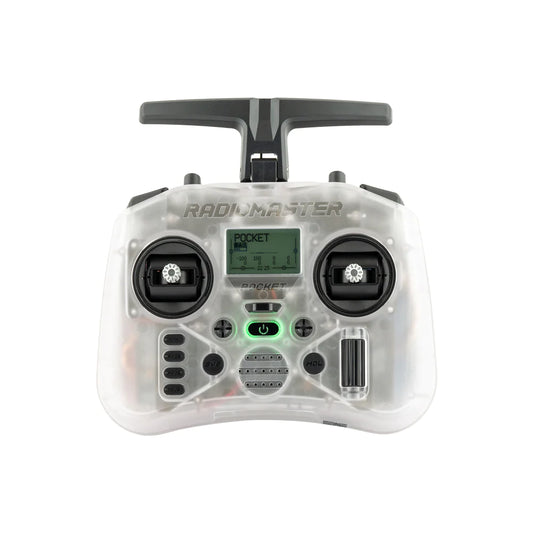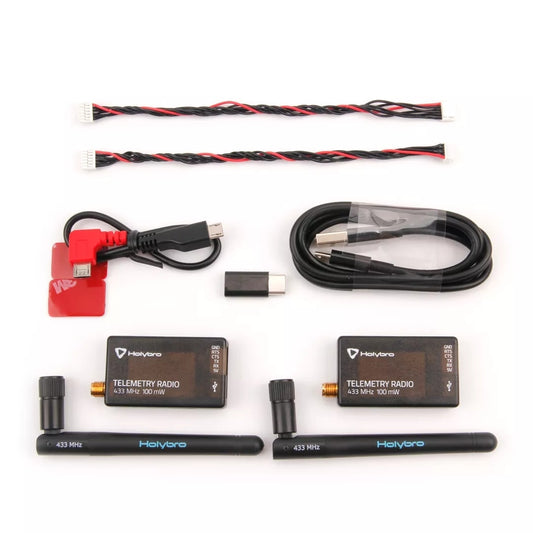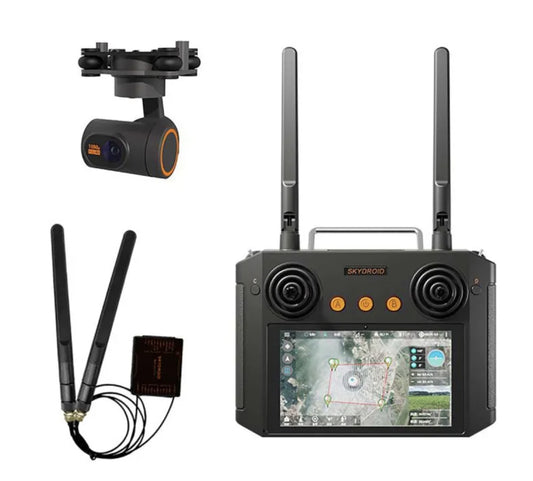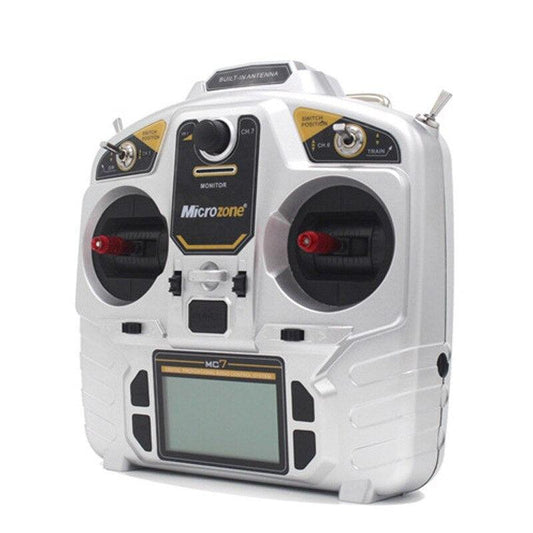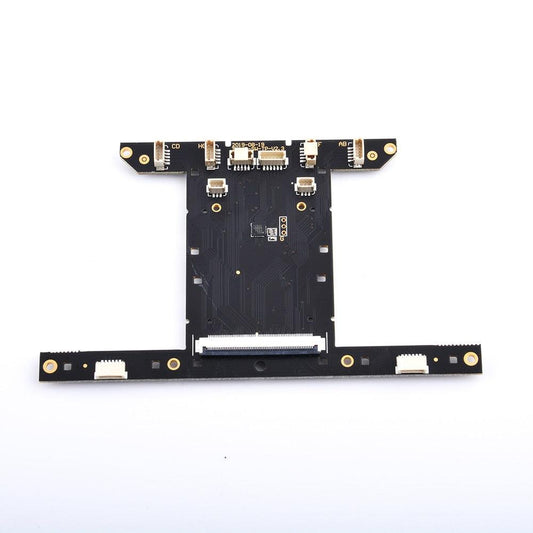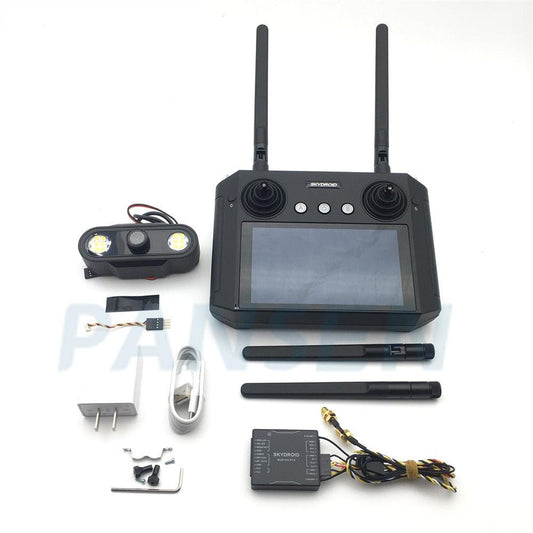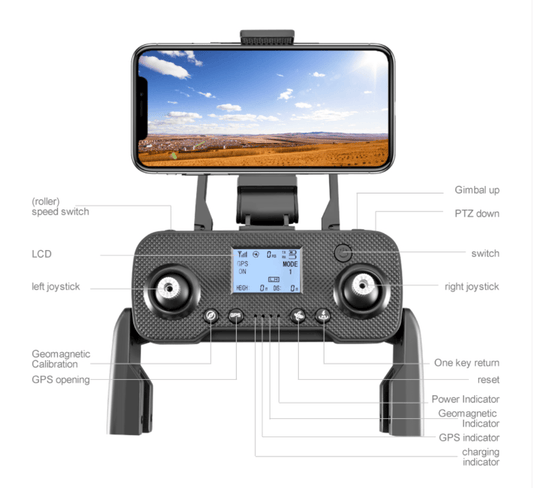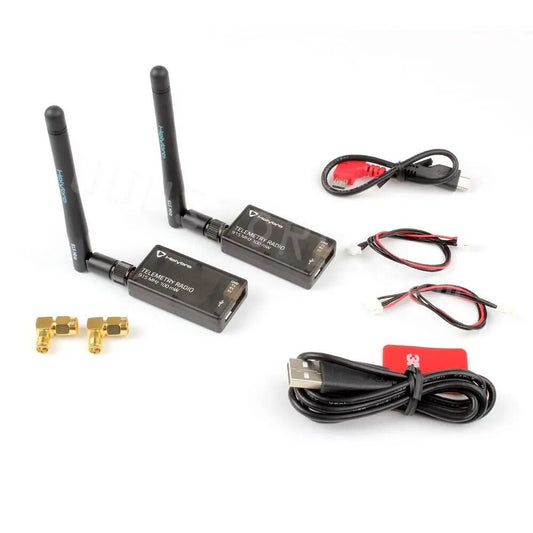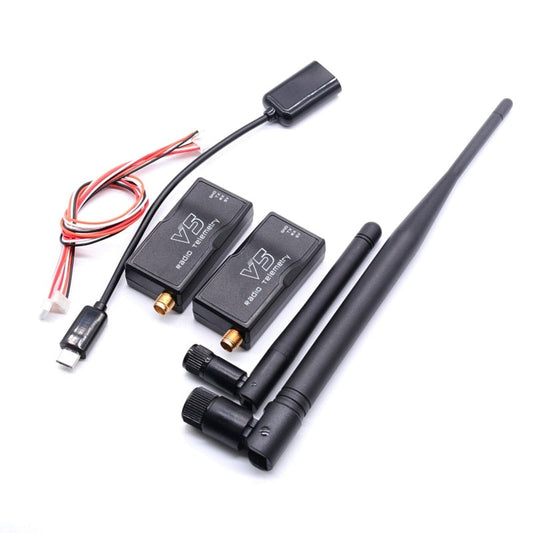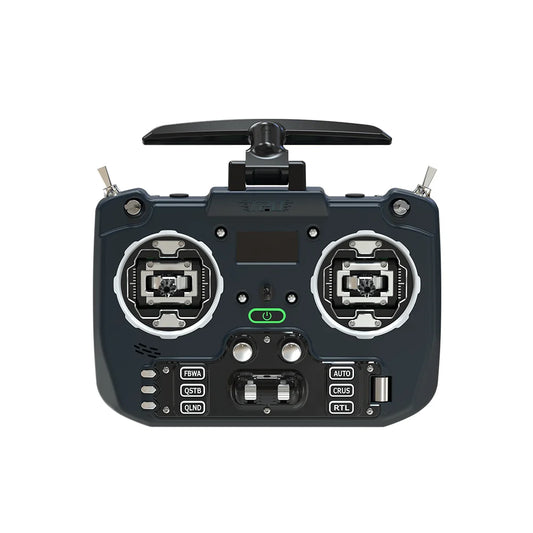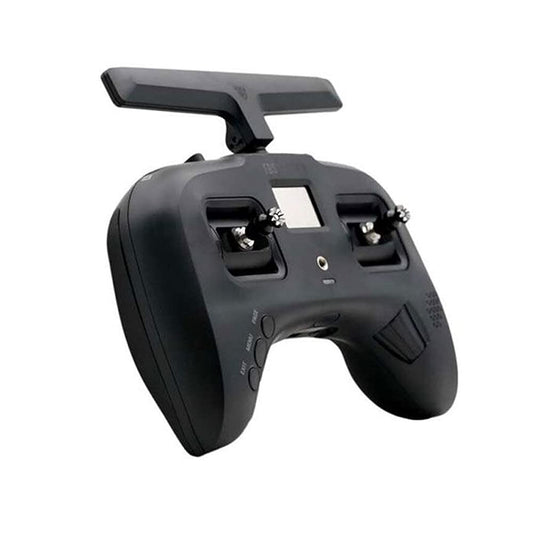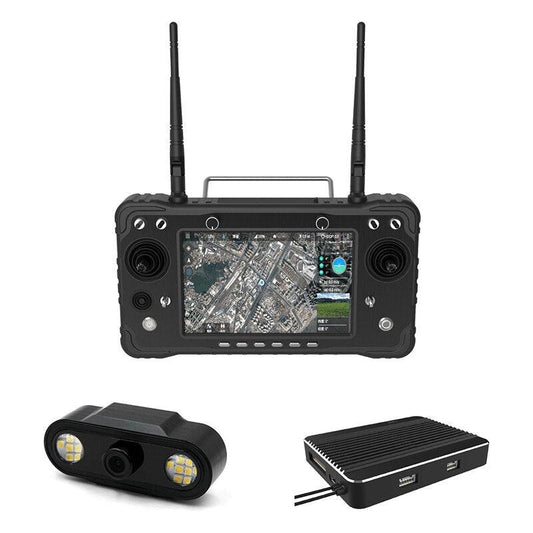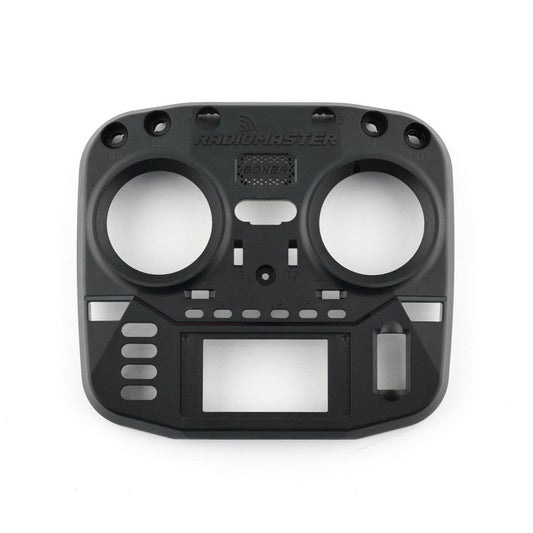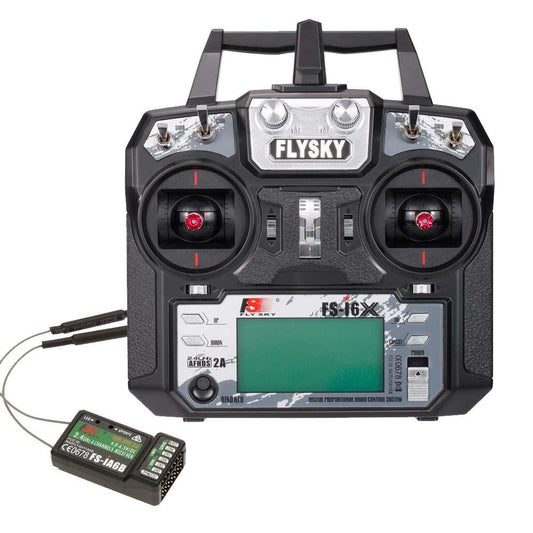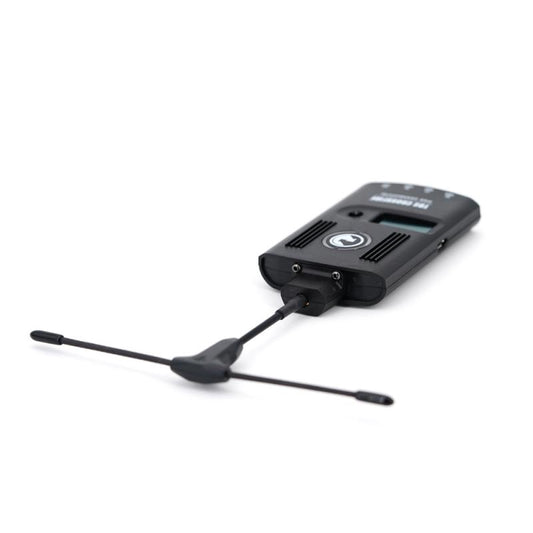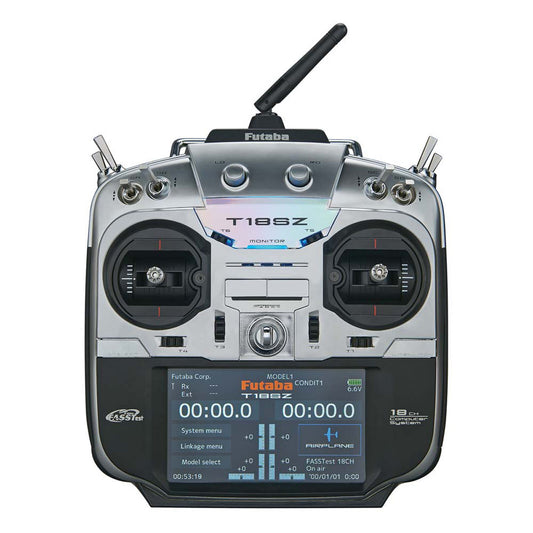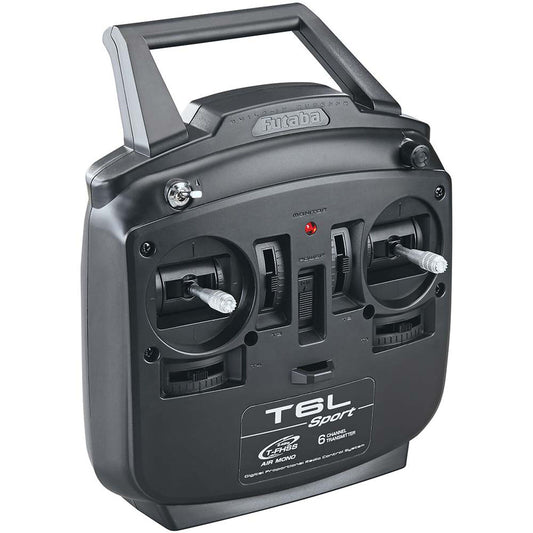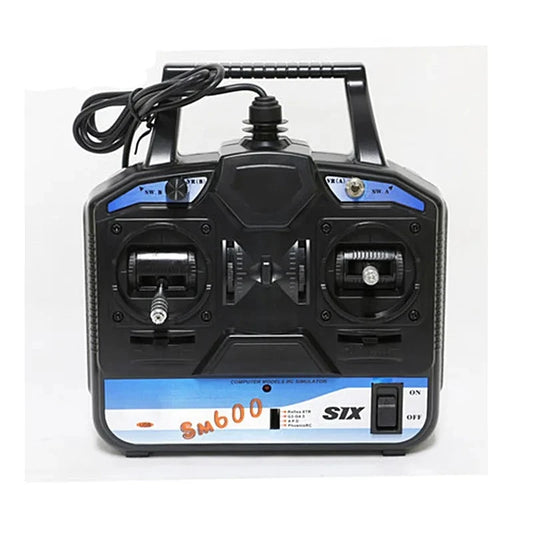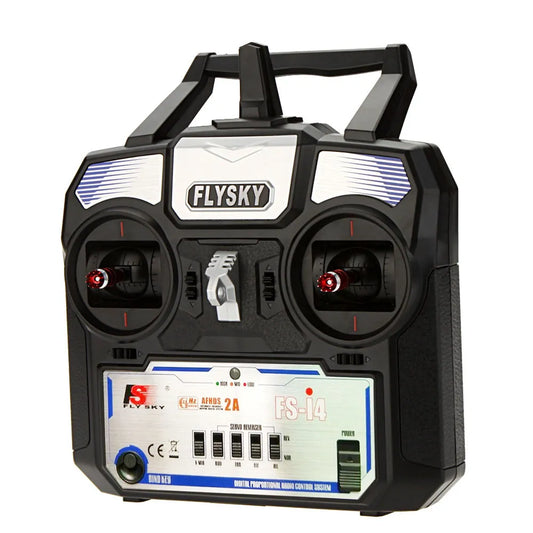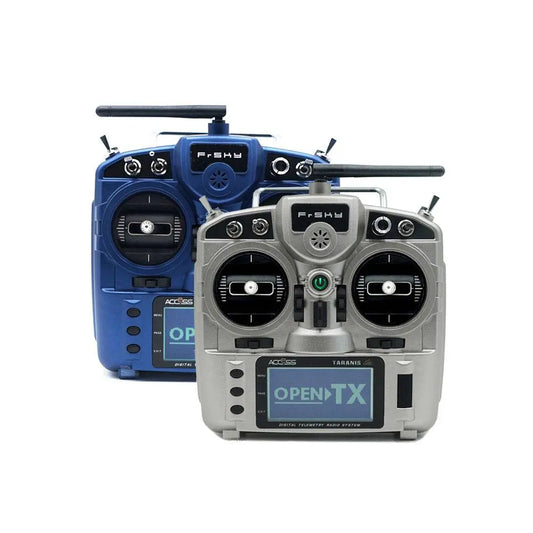-
FLYSKY FS-i6x 2.4G 6CH AFHDS 2A Radio Transmitter IA6B X6B A8S R6B Fli14+ Receiver for RC Airplane Helicopter FPV Racing Drone
Regular price From $24.24 USDRegular priceUnit price per -
RFD900A 915Mhz 3DR Radio Telemetry Modem Module - UAV 40KM Ultra Long Range Data Link Transmission for PIX APM RC Drone Airplane
Regular price From $88.47 USDRegular priceUnit price per -
RadioMaster Pocket Radio Controller (M2) - 16Channel 2.4GHZ ExpressLRS MPM CC2500 EdgeTX System
Regular price From $99.00 USDRegular priceUnit price per -
Futaba T6K V3S Transmitter - 8 Channel 2.4GHz S-FHSS/T-FHSS Radio System With R3006SB / R3008SB Receiver
Regular price From $259.99 USDRegular priceUnit price per -
Holybro SiK Telemetry Radio V3 - 100mW 500mW 433MH 915MHz Open-source SiK firmware Plug-n-play for Pixhawk Standard Flight Controllers
Regular price $81.73 USDRegular priceUnit price per -
Futaba T16IZ Super 18CH Transmitter with R7308SB Receiver | FASSTest & S.Bus2 Compatible
Regular price From $669.00 USDRegular priceUnit price per -
RadioMaster TX16s Rear Case Speaker Optional Upgrade set For RadioMaster TX16S
Regular price From $10.20 USDRegular priceUnit price per -
Skydroid H12 PRO Remote Control for UAV Agricultural Sprayer Drone With 10KM 2K 1080P Video Stream 3-Axis Camera
Regular price From $369.00 USDRegular priceUnit price per -
Futaba Attack 4YWD Transmitter - 4-Channel 2.4GHz Radio System w/Receiver
Regular price $139.00 USDRegular priceUnit price per -
MicroZone MC7 - 2.4G Controller Transmitter With MC8RE Receiver Radio System for RC Airplane Drone multirotor Helicopter VS MC6C
Regular price From $21.67 USDRegular priceUnit price per -
SIYI UniRC 7 / 7 Pro - 2.4 & 5 GHz 40KM 7 Inch 1080P Handheld Ground Station for UAV Drone
Regular price From $199.00 USDRegular priceUnit price per -
Original RadioMaster TX16S Parts Fit For Replacement TX16S Hall TBS Sensor Gimbals 2.4G 12CH Radio Transmitter
Regular price From $10.20 USDRegular priceUnit price per -
Skydroid H12 2.4GHz 12 Channel 1080P remote control spray drone digital image control R12 Receive Plant Protection Machine
Regular price From $50.72 USDRegular priceUnit price per -
SIYI MK15 Mini HD Handheld Smart Controller Remote Control 15KM 1080P Low-Latency Radio System Transmitter Agriculture FPV
Regular price From $573.23 USDRegular priceUnit price per -
Remote Controller For RG106 Pro/Max Drone
Regular price $49.00 USDRegular priceUnit price per -
Holybro SiK Telemetry Radio V3 - 100mW 433MH 915MHz Open-source SiK firmware Plug-n-play for Pixhawk Standard Flight Controller
Regular price $83.24 USDRegular priceUnit price per -
3DR Radio V5 Telemetry - 433Mhz 915Mhz 100MW/500MW Air and Ground Data Transmit Module with OTG cables for APM 2.8 /Pixhawk 2.4.8
Regular price From $15.25 USDRegular priceUnit price per -
Jumper T20S T20 V2 - 2.4G 915MHz 1W RDC90 HALL VS-M Full Size Radio Remote Control Edgetx ELRS
Regular price From $138.94 USDRegular priceUnit price per -
Team BlackSheep TBS TANGO 2 / 2 PRO V4 - Built-in CrossfireSensor Gimbals RC FPV Racing Drone Radio Controller
Regular price From $239.31 USDRegular priceUnit price per -
Jumper T-Pro V2 ELRS 1000mW 30dBm JP4IN1 ELRS ExpressLRS Radio Control for Hall Gimbals Drones Airplane Multirotor Frsky Flysky
Regular price From $25.43 USDRegular priceUnit price per -
Skydroid H16 / Pro 2.4GHz 16CH FHSS 20KM 1080P Digital Video Data Transmission Telemetry Transmitter w/ R16 Receiver MIPI Camera
Regular price From $365.34 USDRegular priceUnit price per -
Original Radiomaster Boxer Replacement Parts Accessories for Radiomaster Boxer
Regular price From $11.72 USDRegular priceUnit price per -
NEW RadioMaster TX16s Optional Cowboy (light brown) Leather Side Grips (pair)
Regular price From $30.42 USDRegular priceUnit price per -
Flysky FS-i6X Transmitters - 2.4GHz 6CH AFHDS 2A RC Transmitter with FS-iA6B Receiver for RC Drone Airplane Helicopter FPV Remote Controller
Regular price From $26.87 USDRegular priceUnit price per -
Radiomaster BOXER Radio FPV Controller - ELRS 4IN1 CC2500 Multiprotoco Transmitter Built-in Cooling Fan High-Frequency Transmitter
Regular price From $211.60 USDRegular priceUnit price per -
TBS Crossfire Tx Lite - Team BlackSheep 868MHZ / 915MHZ 1.1W 3.2W 76g Long Range R/C Transmitter
Regular price $179.00 USDRegular priceUnit price per -
Futaba WSC-1 Wireless USB Simulator Control Link for RealFlight (S-FHSS Compatible)
Regular price $79.00 USDRegular priceUnit price per -
Radiomaster Nomad Dual Band 1-watt Gemini Xrossband ExpressLRS Module Built-in RGB Light Strip With Nano/Micro Module Adapter
Regular price $64.31 USDRegular priceUnit price per -
Skydroid G20 - 2.4G/5.8G Dual Band 30KM Long Distance Remote Controller With GR01 Receiver for Industrial Drone
Regular price From $89.00 USDRegular priceUnit price per -
Futaba T14SG Transmitter - 2.4GHz 14ch FASSTest Radio System Remote Controller For Alrplane
Regular price From $599.00 USDRegular priceUnit price per -
Futaba 18SZ 2.4GHZ 18CH Transmitter - HVGA 4.3 inch Full Color LCD Touch Screen Air Telemetry Radio System
Regular price From $969.00 USDRegular priceUnit price per -
Futaba 6L Sport 6-Channel T6L T-FHSS Transmitter with R3106GF Receiver
Regular price $135.00 USDRegular priceUnit price per -
FlySky SM600 6 Channel RC Flight Simulator for RC Plane,Helicopter , Drone Training
Regular price $45.92 USDRegular priceUnit price per -
Flysky FS-i4 Transmitter - 2A 2.4GHz 4CH AFHDS Radio System for RC Helicopter Glider with FS-A6 Receiver
Regular price $32.24 USDRegular priceUnit price per -
FrSky Taranis X9 Lite S ACCESS 2.4G 24CH Radio Transmitter
Regular price $135.00 USDRegular priceUnit price per -
Orqa FPV.CTRL & ImmersionRC Ghost UberLite Bundle
Regular price $169.00 USDRegular priceUnit price per
